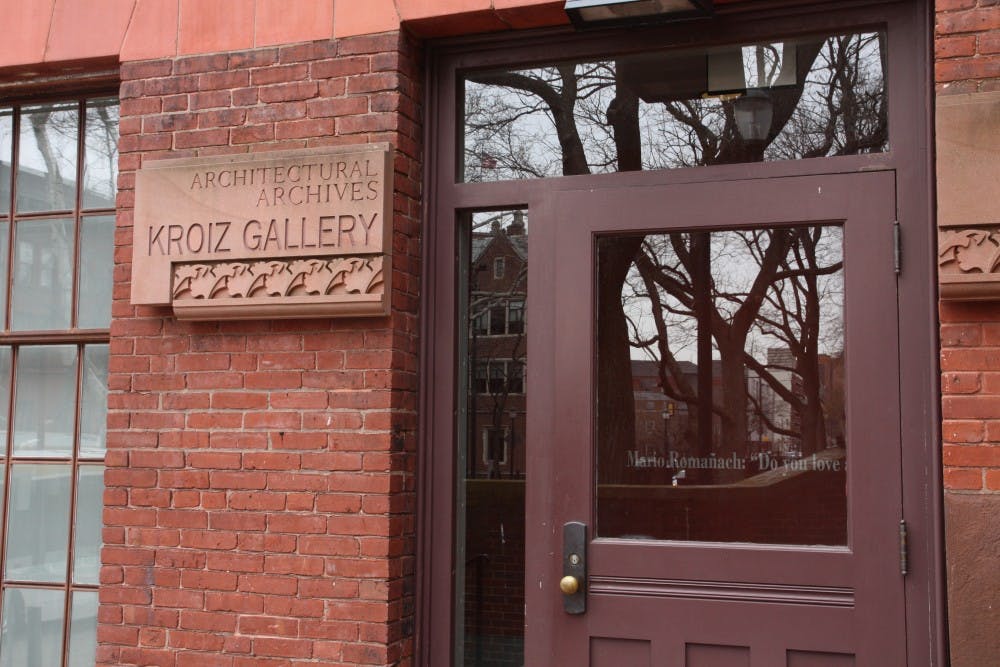Louis I. Kahn: Penn alum, Penn professor, and, as so many often considered, “America’s foremost living architect.” But unlike the many Penn alum in the arts, whose legacies on campus are the mere facts that they attended the university, Kahn left a tangible, indelible mark in the form of his architectural designs for buildings on and off campus. Today, many of these plans can be found right here in metal drawers of the architectural archive at Fisher Fine Arts Library, depicting the inner workings of perhaps one of the most influential architects of the 20th century.
Kahn, born in Pärnu, emigrated to America at an early age, graduating from Penn in 1924 with a Bachelor of Architecture. From there, he began his career, touring Europe to explore the architecture, founding the Architectural Research Group, and, of course, designing plans for new projects and buildings. One of his most important contributions to architecture was that he provided an alternative to International Modernism. Rejecting the model of the glass box, as posed by Mies van der Rohe, who was often regarded as one of the pioneers of modernist architecture, Khan chose instead to evoke solidity and monumentality with brick and concrete. Using cubic shapes, flat roofs, reinforced concrete, and open plan interiors, his buildings came to reflect his philosophy of “less is more.”
And this is evident in his designs. One of his most prominent buildings is the Richards Medical Research Laboratories (on 3700 Hamilton Walk), once characterized by the MoMA as “probably the single most consequential building constructed in the United States since the war.” In fact, this was the building that propelled him to international acclaim. It serves as a strong example of the mid-twentieth century American Modernism as embodied by Kahn. Structured as group of towers held together by a central tower, the Laboratories is reminiscent of his style of connecting the past with the present.
As much as the Laboratories represents Kahn's success, though, it also represents his failures: the building failed to be useful. Researchers and scientists were adverse to the design, and the high ceilings made certain experiments impossible. Kahn, characteristically poetic, understood this as a possibility, but he also understood that his timeless work would persist despite its downfalls. In an interview with BOMB published in '92, Kahn waxed, "An architect must have tremendous power of anticipation.When he builds a building, he is building it today. There’s no such thing as building a building for the future. It’s impossible to anticipate the future, but it is possible to anticipate the lasting quality in what you do today! That is why buildings that have been done in a certain era last; they simply reverberate. There isn’t a time when a great building isn’t felt to be a great building. It’s a manifestation of what is a miracle in man’s realm of expression."
Given that the building still stands today, Kahn’s belief in the timelessness of his work is shown to be true. Right now, as the Laboratories stand, though, it’s surrounded by orange safety netting that could only otherwise point to the need to revise the design to account for the problems. Now, the renovation seeks to capture the original zen–like intention of his work while providing functionality.
Such intentions are captured in the original plans down at Fisher Fine Arts. Undoubtedly, those constructing Richards Medical Research Laboratories today revisited the original plans in order to understand the buildings ambition, but anyone is able to have the privilege of drawing their own conclusions about the work by viewing the plans for themselves.
In addition to the plans of this building, over one hundred other plans for different projects also reside at Fisher Fine Arts. There’s the National Assembly Building of Bangladesh at the country’s capital, revealing Kahn’s ability to apply his American Modernist approach to accommodate international styles. There’s the Temple Beth–El Synagogue, the only synagogue Kahn ever built. There’s Phillips Exeter Academy, that boarding school in New Hampshire you may have even attended.
But these are just the buildings that were built. Among the collection are designs for so many more unbuilt projects that, though they never came to fruition, reflect the genius of Kahn. A Memorial to the Six Million Jewish Martyrs, the Maryland Institute College of Art, United States Consulate Buildings in Angola—all of these buildings are testaments to the extent of Kahn’s abilities. And though the buildings have not been brought to life, perhaps with the archives, they will be in the future.
The Louis I. Kahn Collection is on view by appointment only. Contact William Whitaker, Curator and Collections manager, to see these works in person.

